|
Sep
22
2025
|
|
Posted 80 days ago ago by Admin
|
|
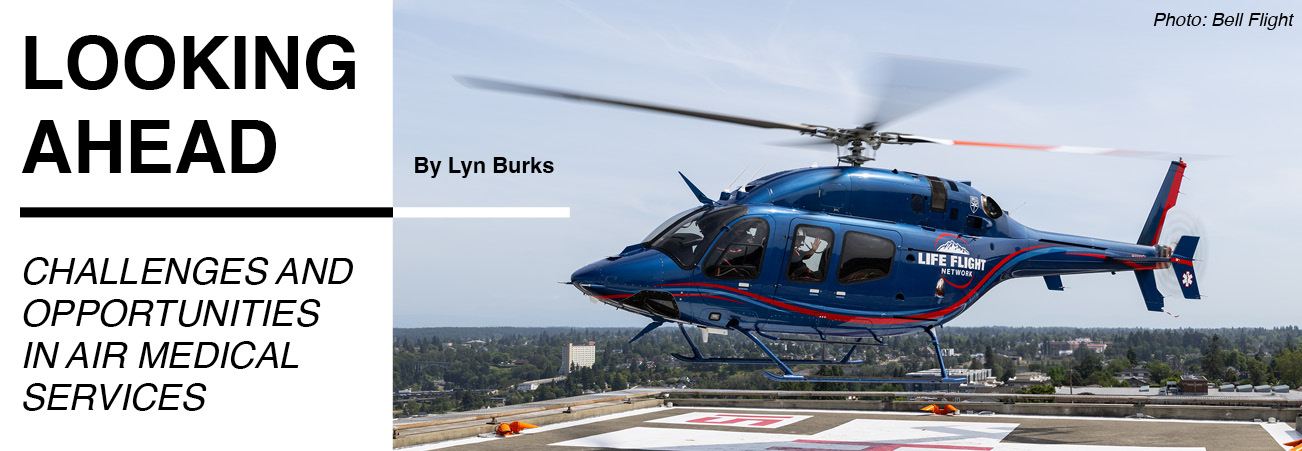
Air medical providers across the U.S. are united in their dedication to safe and reliable service for the communities they serve. Unfortunately, even highly dependable organizations are making compromises to their in-service rates, fleet composition, response times, and coverage areas as they face workforce instability, system fragmentation, and financial pressures. These are some of the operational challenges confronting the modern air medical system requiring attention. Fortunately, there are policy and practice opportunities that can help improve air medical operations.
Rotor Pro took the opportunity to seek the insights of three individuals in the industry with differing backgrounds and perspectives in order to learn more about the challenges and opportunities facing the air medical services industry. We jumped at the chance to learn more from:
- Brett Reeder, president of the National EMS Pilots Association (NEMSPA)
- Kyle Danielson, founder and principal consultant for Flightline Strategy
- Steve Soliz, HEMS segment manager for Bell Flight
TOP CHALLENGES FOR AIR MEDICAL SERVICES
Critical Pilot Shortage
Despite ample opportunities for qualified pilots, HAA faces a severe shortage. This isn't just about a lack of pilots; it's a "pay and quality of life shortage." HAA pilot salaries, especially base pay, often can't compete with major airlines, corporate jets or other high-skill jobs. This pushes talented pilots, including those from the military, to more lucrative careers.
While overtime helps HAA pilots earn more, this overtime dependency is a hidden cost, leading to potential pilot burnout, reduced quality of life, and making the profession less attractive in the long term, despite higher reported gross earnings. If pilots must consistently work beyond standard hours to achieve a livable or competitive wage, it implies that the base compensation is inadequate. This practice, while boosting gross income, inherently leads to longer work hours, increased fatigue, and diminished work-life balance—factors explicitly cited as reasons for pilots leaving the industry.
Solving the problem involves the retention of experienced pilots and requires a focus on both financial incentives and quality of life. This means revising compensation structures and implementing competitive base salaries and holistic compensation packages that include attractive benefits and variable pay. This will help reduce unsustainable reliance on overtime, which often contributes to burnout.
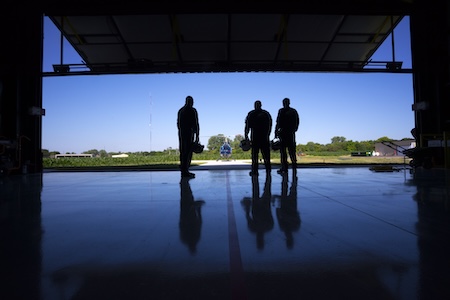
Investing in comprehensive initiatives is crucial to expand the pipeline of qualified pilots. This involves establishing robust industry initiatives, scholarships, and partnerships with flight schools to alleviate the prohibitive costs of helicopter pilot training and accelerate career progression. Mentorship programs can also play a vital role. For example, programs like VAI's successful RotorPathway in Utah and Louisiana demonstrate effective models for this approach.Creating direct and incentivized pathways for military helicopter pilots into civilian HAA roles is paramount. - Brett Reeder, NEMSPA
System Fragmentation
Air and ground EMS providers routinely fill the gap for each other, yet they often exist in parallel administrative structures with their own priorities, goals, and resources. As ground EMS providers contract due to staffing shortages and financial pressures, air medical services are often called upon to fill the gap, which can lead to sudden surges in demand. I suspect that the growing strain on rural ground EMS will continue to spill over into air medical services.
Additionally, the misalignment of dispatch practices from county to county can lead to duplicated responses while others wait. This is not only inefficient, but it can also increase the risk to the responding crew. This occurs with both scene responses and requests to critical access and rural hospitals. As international research has demonstrated, system-level coordination of triage protocols, dispatch practices, and base location would likely improve overall air medical coverage and response times by reducing unnecessary overlap of services.
These are just two of the system-level issues that ultimately affect the success of air medical services, as financial pressures already threaten their sustainability. - Kyle Danielson, Flightline Strategy
Uncompensated Care
HEMS responds when requested by hospitals, law enforcement and ground EMS services, no matter if the patient has the ability to pay. Depending on where the HEMS agency is located, that percentage of population can be a significant amount of care that will have to be written off as bad debt or charity depending on the agency. According to the Congressional Budget Office, the currently passed legislation called the Big Beautiful Bill will add an additional 17 million uninsured citizens over the next 10 years. Some states have the ability to pick up a portion of uncompensated care, but not 100% of the costs. This will add to the burden of the industry. - Steve Soliz, Bell Flight
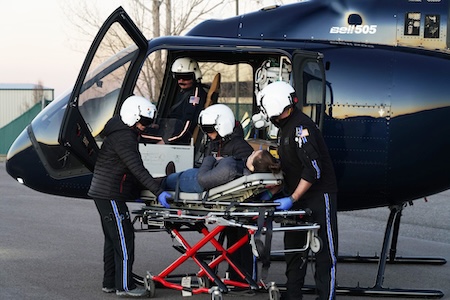
Insufficient Weather Reporting:
One of the hurdles for HAA operations is the large gaps in weather reporting, particularly in remote areas. HAA often operates into unimproved landing zones (LZs) where official weather stations are non-existent. This lack of precise, real-time weather data can lead to no-go decisions, delaying critical patient transport, or worse, increasing risk if crews push limits.
Solution: NEMSPA is actively pursuing a crucial solution in expanding the FAA Weather Camera network. This includes not only the FAA's own deployments but also integrating third-party cameras from hospitals, state DOTs, and even private companies. NEMSPA advocates for policy changes to allow these camera views to be used for "go" decisions, not just no-go ones. We support robust training for pilots and dispatchers to interpret visual weather conditions effectively. This would provide invaluable situational awareness, enhancing safety and enabling more timely flights. - Brett Reeder, NEMSPA
Financial Sustainability
When reimbursement covers less than half of operating costs and payment delays extend beyond 100 days, programs must make trade-offs that affect service quality and their ability to meet demand. This involves everything from base placement to aircraft choice and staffing configuration. Making changes to the chronically underfunded system without adding pressure on patients, through mechanisms like the No Surprises Act, is a positive step forward. We can and should do more to ensure the sustainability of air medical services. Despite these funding gaps, forward-thinking operators are finding ways to specialize their services for the patients who benefit most from air medical care. - Kyle Danielson, Flightline Strategy
No Surprises Act
The NSA was enacted in 2022 to prevent insured patients from being balance billed for out-of-network air ambulance services beyond the in-network cost, and prohibits using high charges and public payer rates (like Medicare) when determining payment through an independent dispute resolution (IDR) process.
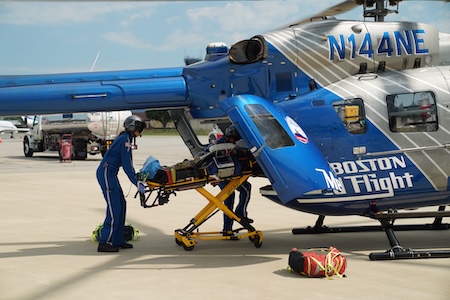
This is a shift towards a market-based approach to promote negotiations between insurers and providers to reach fair in-network agreements. The goal was that then the insurance company and the HEMS agency would enter an (IDR) process to settle payment disputes between out-of-network providers and health plans when they can't agree on a payment amount for certain services. This process involves a third-party entity, certified by the government, that acts as an arbiter and chooses between the payment offers submitted by the provider and the health plan.
Although HEMS agencies are winning approximately 80% of these denial appeals, payment is not occurring. It is being reported that denials by insurance companies have increased by over 20% since the NSA has gone into effect. - Steve Soliz, Bell Flight
The Rise of Drones and Airspace Integration
The increase in drones poses a growing threat of near misses or strikes with HAA aircraft. A lack of standardized reporting makes quantifying this risk and developing mitigation strategies difficult. NEMSPA is actively seeking to address this by pushing for improved drone incident reporting and data collaboration. As highlighted by NEMSPA's recent inquiries to organizations like ASRS, the goal is to create a centralized, easily searchable database for drone near misses and strikes. This accurate data is essential for informing regulatory bodies, developing effective airspace management strategies, and creating public awareness campaigns regarding safe drone operation around HAA flight paths and LZs. - Brett Reeder, NEMSPA
Effect of Tariffs
The tariffs on replacement parts are unprecedented and have been reported as high as $300,000 for an engine rebuilt in Europe! These unplanned-for expenses prolong out of service times (AOG) and impact patient response as some multi-aircraft companies have to move around assets to cover areas that are short an aircraft. One legislative discussion we are having is advocating the re-implementation of the 1979 Agreement on Trade in Civil Aircraft which made aviation parts duty free. - Steve Soliz, Bell Flight
TOP OPPORTUNITIES FOR AIR MEDICAL SERVICES
Specialized Clinical Delivery
As medicine advances, so does the quality of care we provide in the field. From administering blood products to highly specialized treatments, such as mechanical circulatory support (e.g., ECMO, IABP, and Impella), and neonatal care, air medical services enhance patient outcomes not only through rapid response, but also with highly trained, multidisciplinary teams that deliver care. Advanced geospatial analysis, as part of operational strategy and planning, can help align these limited resources with the patients and communities most likely to benefit from them. -Kyle Danielson, Flightline Strategy
Enduring and Growing Demand for Life-Saving Services
Despite challenges, the fundamental need for rapid air medical transport remains strong and is growing. HAA is an irreplaceable component of the healthcare system, especially in regions with vast distances or limited ground infrastructure. As populations age and the prevalence of chronic diseases increase, the demand for swift, specialized medical transport will only continue to rise. - Brett Reeder, NEMSPA
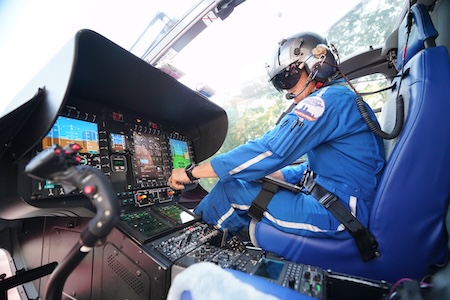
Multi-Mission Aircraft
An underutilized opportunity lies in the integration of aviation assets in complementary services like air medical, search and rescue, and firefighting. When viewed as a shared asset, larger, more extended-range aircraft, such as those in the light-intermediate and medium twin categories, could alleviate the financial burden on any single agency while expanding the capabilities of specialized medical teams. A multi-mission specialty aircraft presents an ideal chance for groups with similar government funding sources and mission profiles that align with shared assets. The potential benefits increase when considering the possibility of reducing fixed-wing costs by adding long-range rotor-wing capability, rather than expanding a program’s fixed-wing fleet. While our industry optimizes approaches with traditional aircraft, the emerging eVTOL technology is likely to reshape our capabilities in specific settings. - Kyle Danielson, Flightline Strategy
Advanced Air Mobility
I witnessed the first major U.S. air medical operator’s announcement for eVTOL aircraft, signaling a shift in the industry towards advanced air mobility (AAM) platforms. While the efficacy has yet to be proven in the air medical industry, and regulations struggle to keep pace, it’s clear that AAM is no longer a concept; it’s here. With promises of significantly lower operating and maintenance costs, eVTOLs are an appealing option for short-range interfacility transports to complement traditional air medical operations.
There’s an opportunity for hospitals to modernize the infrastructure and layout of their heliports, allowing them to benefit from the increased access eVTOLs may provide. Significant research and development is also underway for uncrewed aircraft, which may offer an opportunity to simultaneously deploy specialty resources from multiple locations to meet the patient’s unique needs. The question at this juncture is not if eVTOL transport will replace traditional air medical operations, but rather how they can complement existing services to benefit our patients and the sustainability of the industry. - Kyle Danielson, Flightline Strategy
Leadership in Airspace Evolution
As the airspace becomes more complex with the integration of UAS and potentially autonomous systems, HAA has a unique opportunity to shape the future of aviation safety and operations. The experience of HAA pilots in dynamic, low-altitude environments is invaluable. HAA organizations, through bodies like NEMSPA can collaborate on policy development as well as actively participate in regulatory discussions to ensure new airspace rules prioritize HAA safety and operational needs. -Brett Reeder, NEMSPA
READ JUL/AUG ISSUE OF ROTOR PRO
READ MORE ROTOR PRO: https://justhelicopters.com/Magazine
WATCH ROTOR PRO YOUTUBE CHANNEL: https://buff.ly/3Md0T3y
You can also find us on
Instagram - https://www.instagram.com/rotorpro1
Facebook - https://www.facebook.com/rotorpro1
Twitter - https://twitter.com/justhelicopters
LinkedIn - https://www.linkedin.com/company/rotorpro1